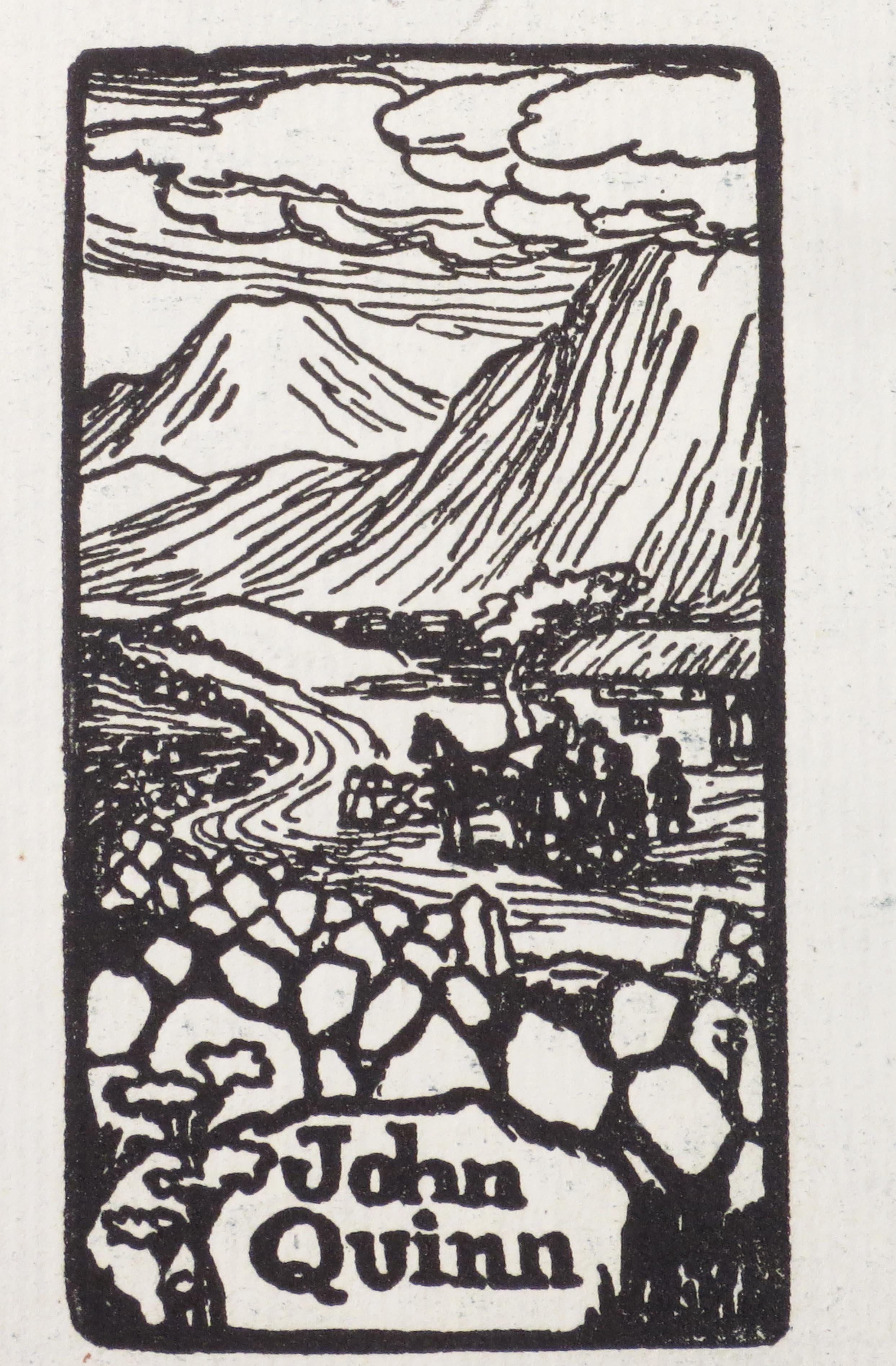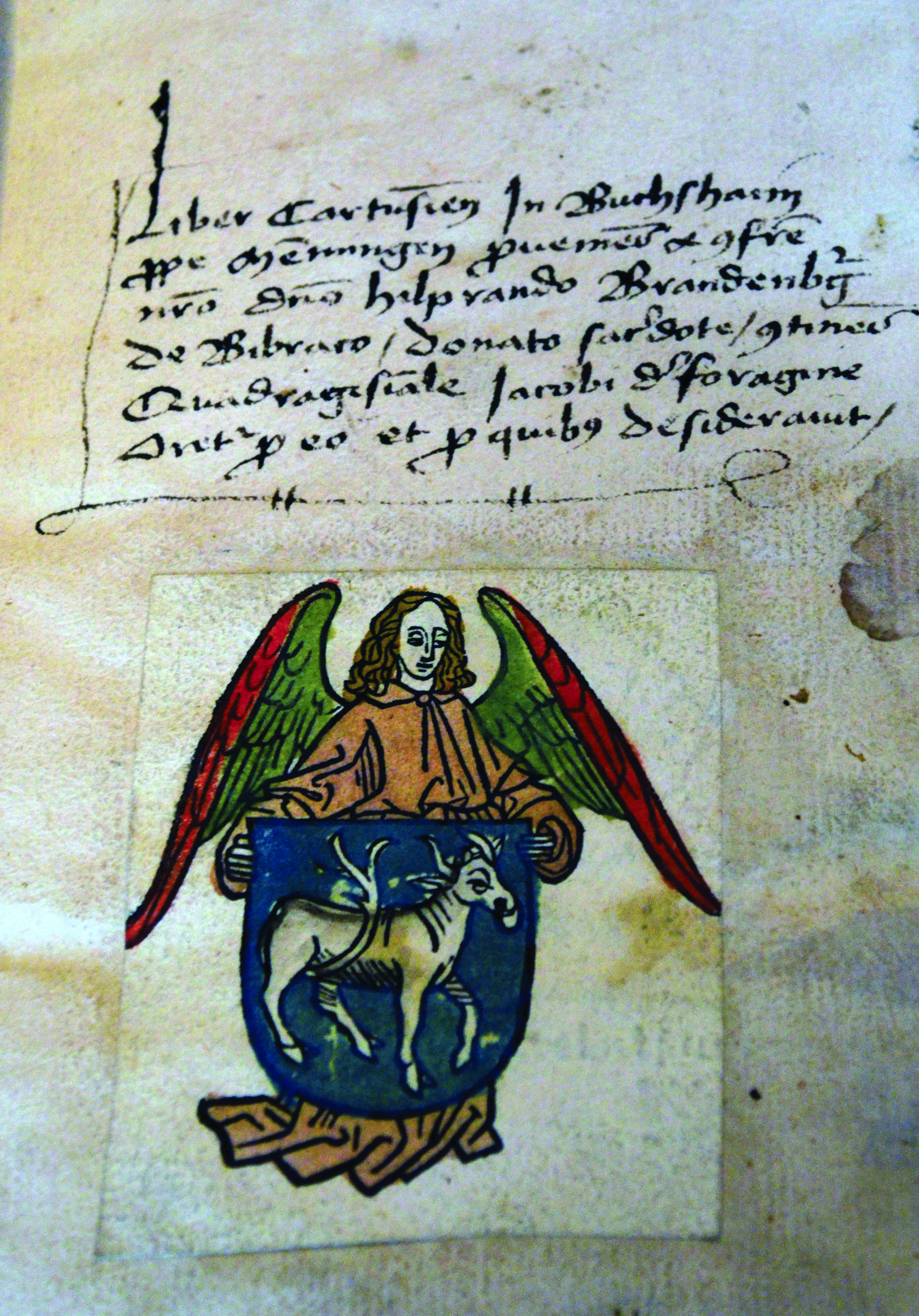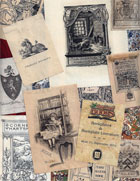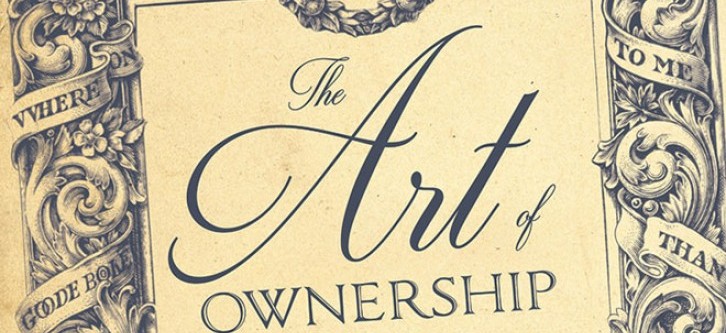Bookplates are fascinating corner of the literary world. If your only exposure to bookplates are the rather anodyne mass-produced examples some modern bookstores sell, you may not appreciate the individuality, wit, and artistic skill that went into bookplates in years gone by. A new exhibition attempts to showcase the best examples for bookplates from centuries past.
The Rosenbach of the Free Library of Philadelphia presents The Art of Ownership: Bookplates and Book Collectors from 1480 to the Present, from September 21, 2016 through January 17, 2017.

Edwin Davis French (1851–1906), bookplate of William Keeney Bixby. Engraved print and black printing ink on paper. New York, 1906. In Nathaniel Hawthorne (1804–1864), The scarlet letter: a romance ... Boston: Ticknor, Reed, and Fields, 1850.
The primary function of a bookplate is simply to indicate the owner of a book, yet book collectors across the centuries have commissioned ornate and evocative designs that do much more than designate property. From coats of arms and etched portraits to scenes of libraries and fantastical creatures, these miniature artworks may reveal a great deal about the ancestry, occupation, artistic taste, or philosophy of the men and women who used and circulated them.
The Art of Ownership features beautiful and curious specimens from five centuries of books in the Rosenbach's collection, along with examples from the Rare Book Department of the Free Library of Philadelphia, the University of Delaware’s William Augustus Brewer Bookplate Collection, and other regional repositories.

Jack Butler Yeats (1871–1957), bookplate for John Quinn. Wood engraving and black printing ink on paper. Ireland, late 19th or early 20th century. In William Michael Rossetti, Fine art, chiefly contemporary. London: Macmillan, 1867.
Notable bookplates include the oldest known printed bookplate, a hand-colored woodcut circa 1480; bookplates from the personal libraries of King George III and Eleanor and Franklin D. Roosevelt; an Irish landscape designed by Jack Butler Yeats (above); and prints by Art Nouveau illustrator Aubrey Beardsley. Some bookplates offer whimsical portraits of the book collectors: William Keeney Bixby's bookplate depicts the owner as an octopus grasping books with all eight tentacles (top), and a lithographic print belonging to E. Norman Sabel depicts an attentive reader who has not noticed that his coattails are on fire. Several remarkable examples belonged to Philadelphian collectors, such as Harry Elkins Widener and Lucy Wharton Drexel.
The Art of Ownership was made possible by a grant from the Pine Tree Foundation of New York and endowment grants from the Marilyn M. Simpson Trust and the National Endowment for the Humanities.

Unknown artist, bookplate for Hilprand Brandenburg of Biberach. Woodcut, black printing ink, and hand coloring on paper. Germany, circa 1480. In Jacobus de Voragine (ca. 1229-1298), Sermones quadragesimales: manuscript, Bopfingen, Württemberg, 1408.
And While We're On the Subject...
 If you collect bookplates, or feel moved to begin a collection after viewing the Rosenbach’s exhibition, make sure you also examine this recent catalog from Bay Leaf Used & Rare Books, which focuses on Bookplates and Bookplate Literature.
If you collect bookplates, or feel moved to begin a collection after viewing the Rosenbach’s exhibition, make sure you also examine this recent catalog from Bay Leaf Used & Rare Books, which focuses on Bookplates and Bookplate Literature.






